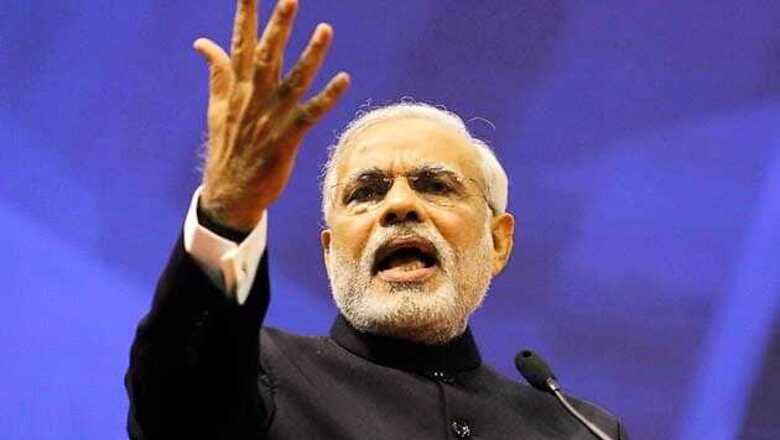
views
Waves do lap up on unexpected shores. Assam, one of the few states that kept returning the Congress to power in the recent past, is witnessing BJP victories in seven of its 14 constituencies. The Congress has been reduced to three seats. Veteran warhorses such as B K Handique from Jorhat and Paban Singh Ghatowar in Dibrugarh have fallen, the latter by nearly 1.9 lakh votes. Chief Minister Tarun Gogoi has announced his resignation, although this is more the Congress leadership closing ranks and deflecting blame from the Gandhi family than anything else.
If there is one state which shows the BJP's new pan-Indian reach, it is Assam. The question is, where does the BJP go from here? The party's future gameplan in Assam is important for two reasons: one, it has to come to power in the state to prove its mass reach at state level beyond the country's north and west. Second, and more important, Narendra Modi's future plans for a BJP-dominated India hinge on his party ruling as many Indian states as possible. Consider this: his friends the chief ministers of Madhya Pradesh and Rajasthan have backed him to the hilt and delivered a clean sweep for the party. Modi would want to continue this as a way to bypass the BJP's Delhi-centred national leaders.
One therefore needs to consider the reasons for the party's stellar performance in Assam. The Modi factor is certainly very important. His speeches dealt with the illegal migrants' issue, although his stand was not very different from earlier BJP leaders including Vajpayee. It is true that Sarbananda Sonowal, party MP from Lakhimpur, was the man responsible for the Supreme Court's verdict against the IM (DT) Act, that singularly ineffective means of detecting illegal immigrants. But the BJP has known for a while that to get a majority in the state assembly it will need to break the Congress' migrant votebank, particularly in West Assam. Whether the state BJP will seek an indigenous votebank consolidation remains to be seen. After all, Barpeta, Dhubri and Karimganj, three of the four LS constituencies hit the most by illegal migration have returned Badruddin Ajmal's AIUDF this time too.
The second big reason is obvious from the turnout, which was nearly 11 per cent higher than in 2009. The universal explanation in such cases, anti-incumbency, holds true for the state in its 14th year under the Congress. Also, the Modi campaign succeeded in drawing out young, aspiring middle class Assamese, a group parties have been ignoring for a while. This group has never been truly for the Congress, but after the decline and stagnation of the AGP in the late 90s had not found a meaningful opposition to the Congress worthy of backing. This time they did, in the form of Modi's BJP. The party will now have to make sure this group stays with it in Assembly elections too.
And finally, the wily Tarun Gogoi, in his twilight years, made a bloomer by trying to create dynasty in the form of son Gaurav Gogoi contesting from his father's old seat of Koliabor. Gogoi's fellow Congressmen did not immediately warm up to this and the party's campaign was affected across the state. Gogoi junior is holding on merely because of residual goodwill for his father in the constituency.
Another factor which might be cited is the tea tribes' vote, which the BJP has been trying to snatch from the Congress for a while. In Dibrugarh, the heart of tea country, two tea tribe strongmen duked it out, but it was the BJP's Rameswar Teli who beat Ghatowar, and the massive margin of victory mentioned above shows the way the wind is blowing. That is another voter base the party will need to consolidate, particularly in Upper Assam.
Against all this there is one vulnerability the BJP will have to address: cadre base. Assam is not RSS-prone and the victories here are on local issues and not so much because of any Hindutva agenda. This won't change anytime soon. Local leaders have their own group of supporters. To expand in future, the party will need to create more followers and not merely the many turncoats who will doubtless flock to it in the near future.
And that's how it was done: Modi's appeal among young, urban and traditionally anti-Congress voters looking for an option; specific inroads into contested votebanks and an apathetic Congress rank and file. The state is certainly a microcosm for the new grounds the BJP has broken in 2014. What it has to look for now is to widen the bridgehead. If it works, the Assam assault will be a template for states down south too.

















Comments
0 comment